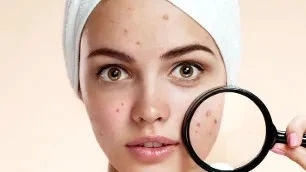Acne, a common skin condition, affects 85 percent of individuals at some point in their lives, according to a Healthline report. For some, it manifests as occasional pimples, while for others, it can be severe and lead to scarring.
Typically appearing on the face, back, neck, or shoulders, acne is most prevalent during adolescence but can occur at any age.
Here’s how stress and acne are related
The link between stress and acne is often misunderstood. While stress does not directly cause acne, it can exacerbate existing conditions. Research indicates that stress slows the healing process of wounds, including acne. Consequently, pimples persist longer, increasing in severity and visibility during breakouts.
Acne causes
Acne develops when excess oils, dead skin cells, bacteria, and sometimes hair block skin pores. Though the exact cause remains unclear, several factors are commonly associated with acne, including hormonal changes during pregnancy and adolescence, certain medications like birth control pills, and genetic predisposition.
Types of acne
Acne varies from mild to severe. Mild forms include blackheads and whiteheads, categorised as mild inflammatory acne. Moderate to severe types involve small, sore pink pimples, papules, and pustules (bumps with pus and red bases). Severe acne features nodules, cysts, or scarring, with cysts and nodules being large, painful, and deeper within the skin.
Acne treatment strategies
Treatment approaches depend on acne severity. Mild acne, the most common type, can often be managed with simple hygiene practices and over-the-counter (OTC) treatments. Effective methods include:
Gentle cleansing: Washing the affected areas gently with soap and water. Harsh scrubbing or using strong soaps can worsen acne.
OTC treatments: Utilizing products containing benzoyl peroxide, sulfur, or resorcinol to reduce acne.
Relaxation techniques: Stress management through relaxation techniques can promote faster healing of acne.


